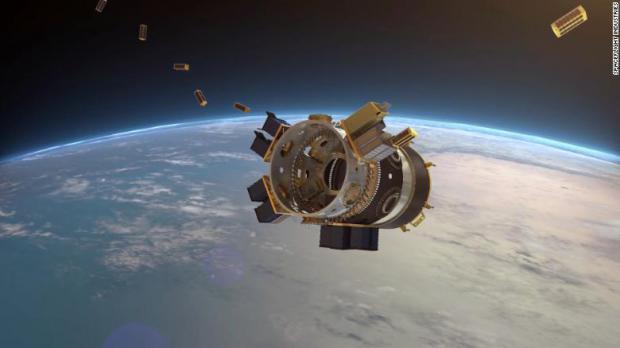
Breaking News
 NonConformist Series: Practical Wealth - Join us virtually Dec 29-30, 2025
NonConformist Series: Practical Wealth - Join us virtually Dec 29-30, 2025
 New bill would allow private citizens to fight cartels: 'WE ARE UNDER ATTACK'
New bill would allow private citizens to fight cartels: 'WE ARE UNDER ATTACK'
 Carnivore Got Me 90% There. This One Drink Changed Everything
Carnivore Got Me 90% There. This One Drink Changed Everything
Top Tech News
 Perfect Aircrete, Kitchen Ingredients.
Perfect Aircrete, Kitchen Ingredients.
 Futuristic pixel-raising display lets you feel what's onscreen
Futuristic pixel-raising display lets you feel what's onscreen
 Cutting-Edge Facility Generates Pure Water and Hydrogen Fuel from Seawater for Mere Pennies
Cutting-Edge Facility Generates Pure Water and Hydrogen Fuel from Seawater for Mere Pennies
 This tiny dev board is packed with features for ambitious makers
This tiny dev board is packed with features for ambitious makers
 Scientists Discover Gel to Regrow Tooth Enamel
Scientists Discover Gel to Regrow Tooth Enamel
 Vitamin C and Dandelion Root Killing Cancer Cells -- as Former CDC Director Calls for COVID-19...
Vitamin C and Dandelion Root Killing Cancer Cells -- as Former CDC Director Calls for COVID-19...
 Galactic Brain: US firm plans space-based data centers, power grid to challenge China
Galactic Brain: US firm plans space-based data centers, power grid to challenge China
 A microbial cleanup for glyphosate just earned a patent. Here's why that matters
A microbial cleanup for glyphosate just earned a patent. Here's why that matters
 Japan Breaks Internet Speed Record with 5 Million Times Faster Data Transfer
Japan Breaks Internet Speed Record with 5 Million Times Faster Data Transfer
SpaceX launched 64 satellites in record-breaking mission

New York (CNN Business)SpaceX delivered 64 satellites into orbit in one fell swoop for a record-setting mission.
Elon Musk's company launched a rocket from Vandenberg Air Force Base in California on Monday after a series of delays triggered by bad weather and last-minute inspections for the rocket. It marked one of the largest satellite ride-sharing missions ever launched and the most crowded single mission in US history, according to Spaceflight, SpaceX's customer for the launch.
The mission illustrated the growing demand to launch small satellites, modern devices that some companies hope will empower an array of new businesses — from internet service to supply chain monitoring.
For SpaceX, Monday's mission, called SSO-A, marked its 19th launch of 2018, surpassing its previous annual record of 18 launches last year.
It was also the first time Musk's company attempted to fly one of its rocket boosters for a third time. The booster, covered in black soot from its two prior flights, landed again on a remote controlled platform in the Pacific Ocean after launch, queuing up the rocket to fly for a fourth time.
SpaceX's goal is to drastically reduce the cost of a launch by reusing the hardware, a feat its competitors long thought was impossible or uneconomical.
The latest version of SpaceX's Falcon 9 rocket, called Block 5, is designed to fly as many as 100 times before retirement, and up to 10 times without significant refurbishment between flights.
The first-stage booster used for the SSO-A mission flew twice in the past six months — first on May 11 for the Bangabandhu mission and again August 7 for Merah Putih.
SpaceX also tried again Monday to recover the rocket's fairing, the bulging cone at the top of the rocket that shields satellites during launch. Musk has said the fairing costs about $6 million.
The company has tried on several occasions to guide the fairing, using parachutes, to a soft landing into a giant net hoisted up by a crew boat called Mr. Steven. But it has yet to hit the mark.
Musk said in a tweet Monday that the fairing halves "missed the net, but touched down softly in the water."

 Aluminum Causes Brain Damage
Aluminum Causes Brain Damage Advanced Propulsion Resources Part 1 of 2
Advanced Propulsion Resources Part 1 of 2

